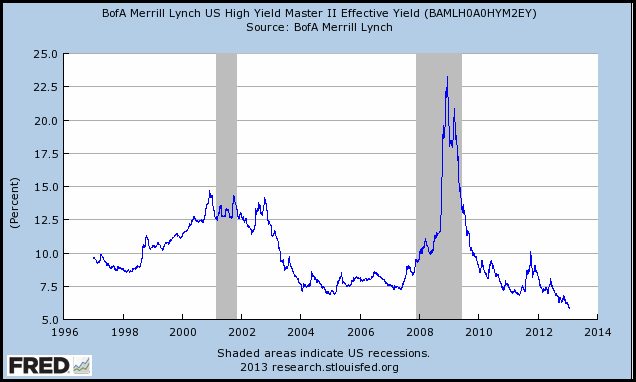“Yields have been pushed down by a highly aggressive central bank policy, with the result that yield-oriented investors have been pushed into owning lower-rated credits,” said Fran Rodilosso, fixed income portfolio manager at Market Vectors ETFs, in a recent note. “As a result, the yields on riskier debt are as low as they have ever been. But the credit spreads, the difference between the yield on a high yield bond and a Treasury security, are actually closer to their historic average.”
Junk bond credit spreads are not anywhere near all-time historical lows, which is one reason why Marc Prosser at Forbes argues that high-yield bonds can continue to rally in 2013. He also cites corporate default rates near all-time lows, yield-starved bond managers leveraging up, and the fact that everyone thinks there is a bubble in junk bonds.
Yet “effective yields” in junk bonds are at multiyear lows, Kimble Charting Solutions points out. The effective yield measures a bond’s yield when interest payments are reinvested. Also, high-yield funds and the S&P 500 are hitting key technical resistance levels at the same time, according to Kimble.
The bottom line is that investors should keep a close eye on high-yield bond ETFs for any additional warning signs.
iShares iBoxx High Yield Corporate Bond
Effective yield chart source: Kimble Charting Solutions
Full disclosure: Tom Lydon’s clients own HYG and JNK.
